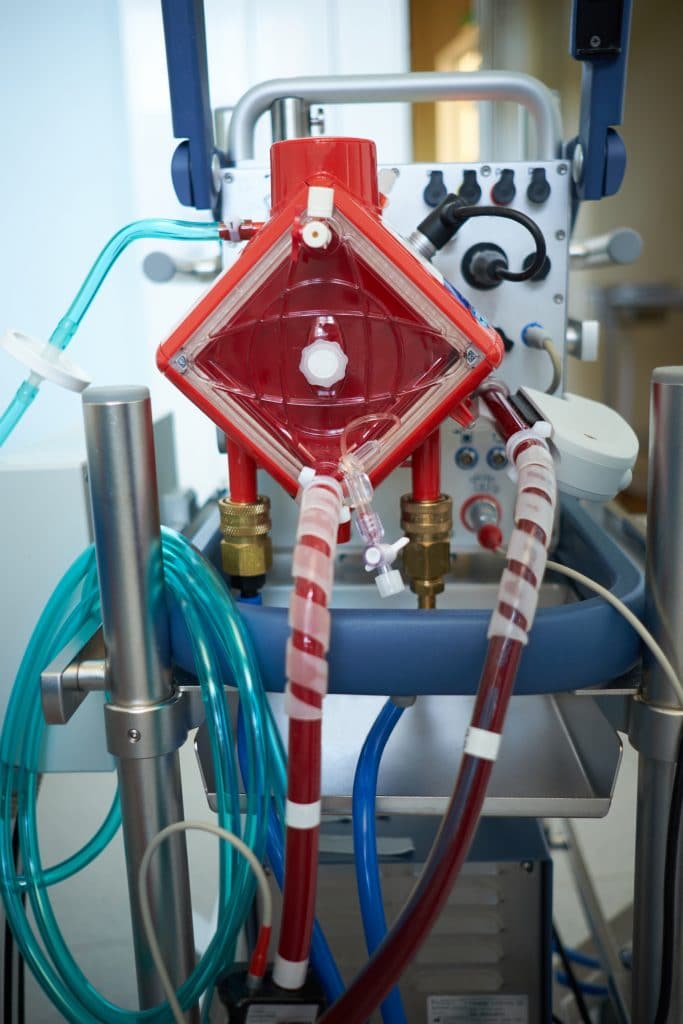CNS Complications in Adult Patients Treated With Extracorporeal Membrane Oxygenation

Objectives
To describe the incidence and outcomes of radiologically confirmed acute CNS complications in extracorporeal membrane oxygenation patients at an Australian extracorporeal membrane oxygenation referral center and identify associated patient characteristics.
Patients
Four-hundred twelve consecutive adult patients supported with extracorporeal membrane oxygenation from 2009 to 2017.
Results
Fifty-five patients (13.3%) had a CNS complication confirmed by CT or MRI, including ischemic stroke (7.0%), intracerebral hemorrhage (3.4%), hypoxic ischemic encephalopathy (3.6%), and spinal cord injury (1.2%). CNS complication rates in the venoarterial, venovenous, and veno-pulmonary artery extracorporeal membrane oxygenation subgroups were 18.0%, 4.6%, and 13.6%, respectively. Neurologic complications were independently associated with the use of venoarterial extracorporeal membrane oxygenation (p = 0.002) and renal replacement therapy (p = 0.04). Sixty-five percent of patients with a neurologic complication died during their hospital admission compared with 32% of patients without this complication (p < 0.001). Venoarterial extracorporeal membrane oxygenation, renal replacement therapy, and days of extracorporeal membrane oxygenation support were also associated with hospital mortality and remained so after adjustment in a multivariable regression model (p = 0.01, p < 0.001, and p = 0.003, respectively).
Conclusions
CNS complications appear to occur more frequently in patients requiring circulatory as opposed to respiratory support on extracorporeal membrane oxygenation and are independently associated with mortality. It remains unclear if these complications are causative of a poor outcome or a marker of severity of the underlying condition. Further research is required to better elucidate modifiable or preventable aspects through better patient selection and change in ongoing care.
